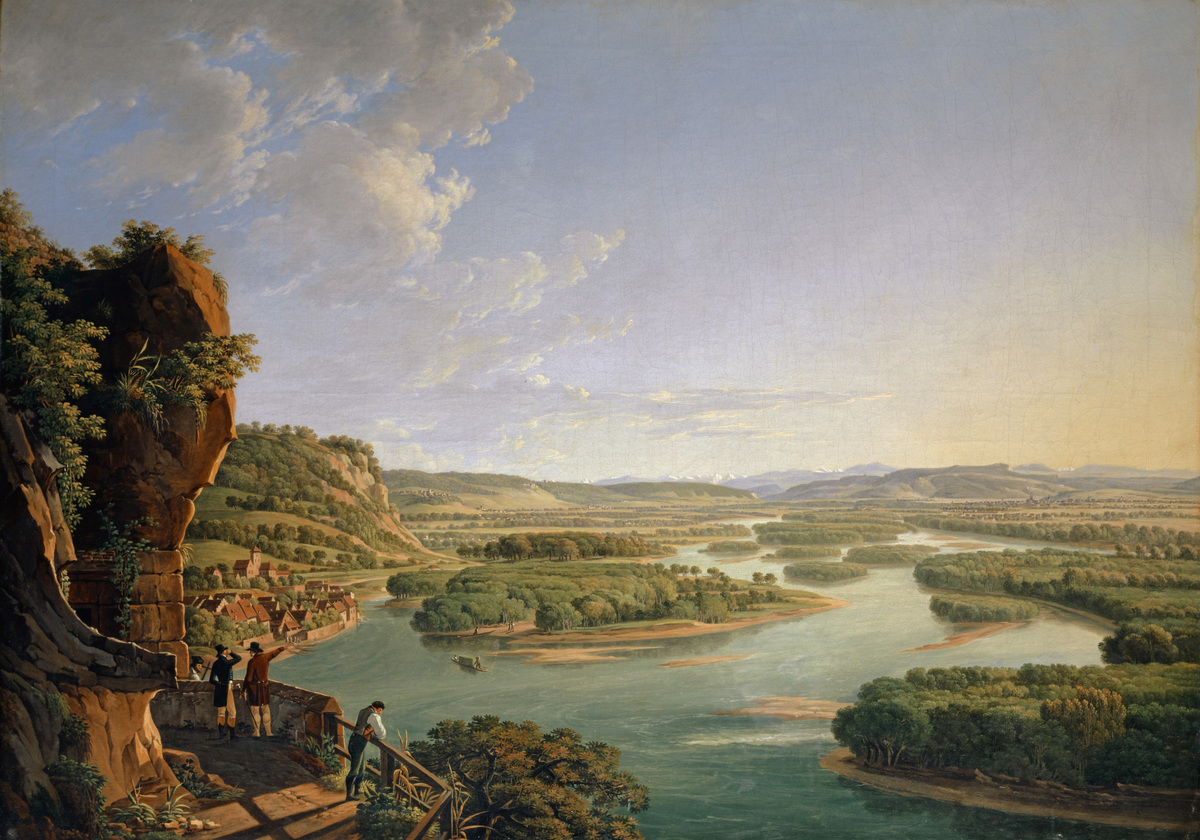Source

Source: Kunstmuseum Basel, Birmann-Sammlung 1859, Inv-71.
Peter Birmann (1758–1844), an artist from Basel, Switzerland, was active in the late eighteenth and early nineteenth centuries. This painting shows how the Upper Rhine looked before the project to narrow and straighten its course in order to control flooding and win back agricultural land—the so-called rectification of the Rhine (1817–1876)—had progressed very far. Clearly visible in Birmann’s depiction are the channels and islands that would disappear from the Rhine over the coming decades (along with associated occupations such as fishing and some milling). Although the <a href="image-5013">rectification of the Rhine</a> aimed, in part, to improve navigation for larger ships, the erosion of the riverbed (the result of a faster flow of water through a straighter, narrower, single channel) led to the formation of rapids over bare rock near the Isteiner Klotz. The rapids themselves became an obstacle for shipping on the route to the emerging industrial center of Basel.

Source: Kunstmuseum Basel, Birmann-Sammlung 1859, Inv-71.
© Kunstmuseum Basel, Birmann-Sammlung